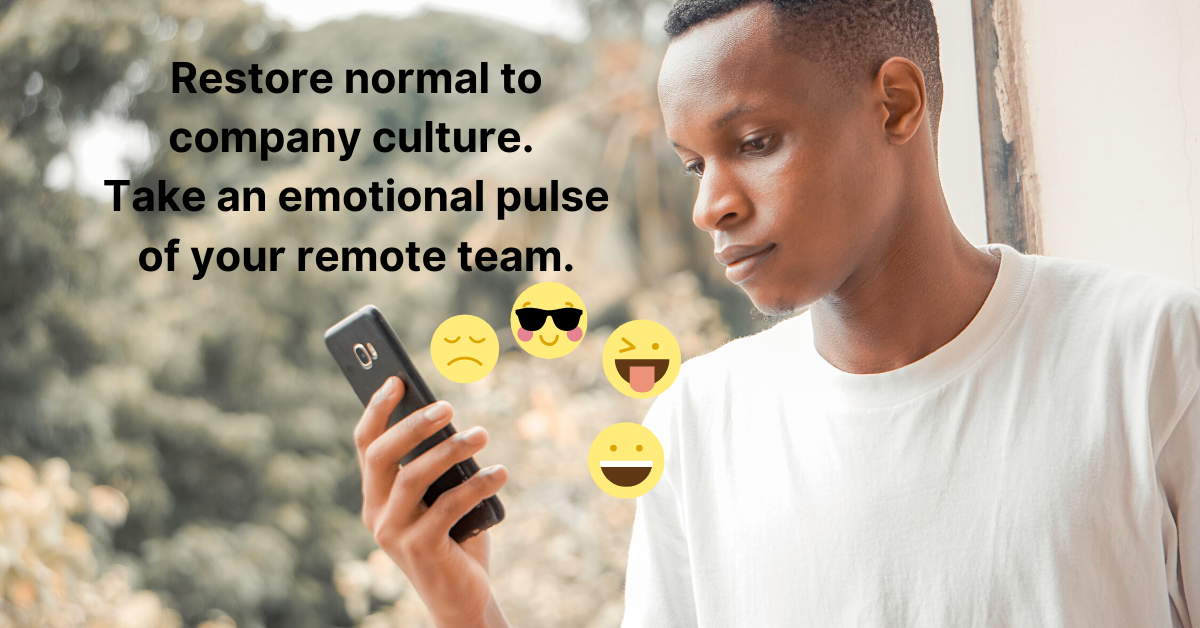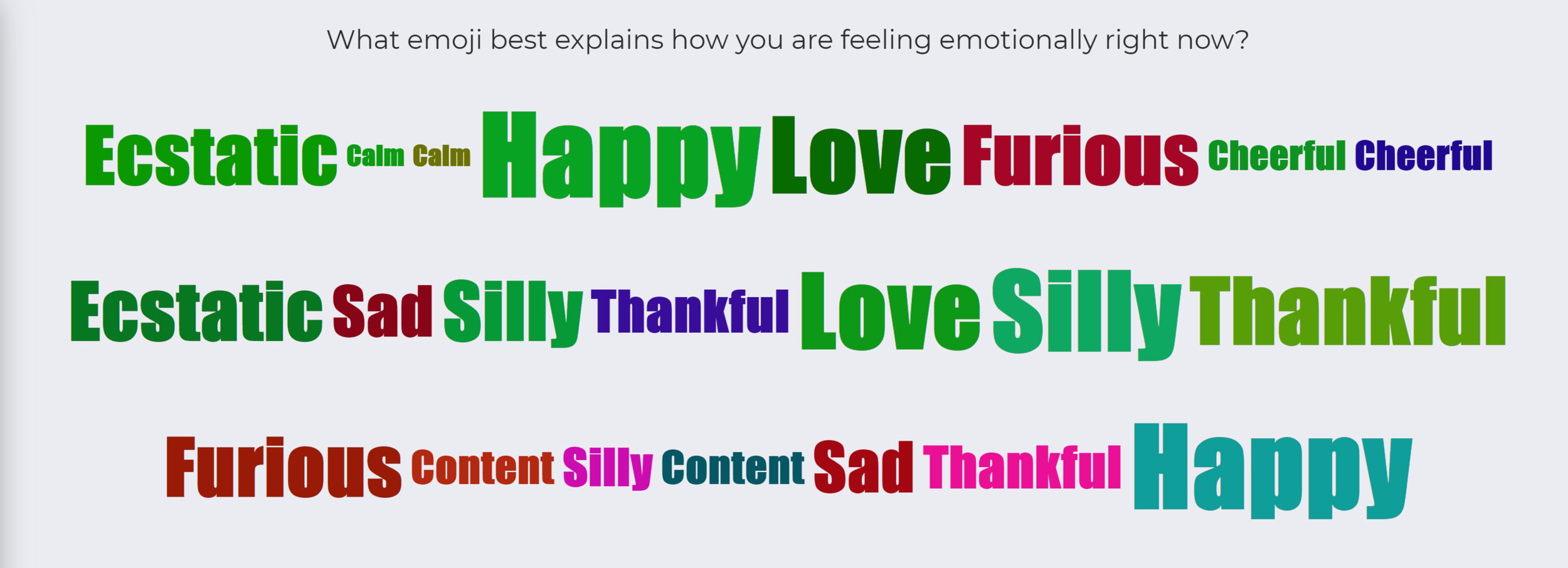The first language-less emotional pulse is ready for testing
Why emoji?
While emoji, also referred to as emoticons, may have started out as decoration for digital text communication, research shows us that it is a valid and highly valuable form of communication. It is key to providing emotional and nonverbal context to written communication. Emoji also transcend language barriers. While you may not understand Japanese or Farsi, you do understand the look on someone’s face, the energy projected by their posture, and the tone of their voice. Emoji take the place of these nonverbal cues and can be used on their own to communicate an emotional reaction.
For example, you receive a text message asking how you are doing today. When you respond with a thumbs up emoji 👍, we all understand that you are providing a positive response and doing alright at the moment. Even though there are 850 emoji available to use, most people tend to use the same 30 to 50.
How does it work?
Mindful Appy uses an anonymous system that does not identify individual respondents. When somebody responds with an emoji, there is no context around who they are. Their identity and their age, gender, and ethnicity are all stripped away, leaving only the emotion felt based on an emoji. This allows people to feel comfortable providing feedback that they might otherwise keep to themselves when their feelings can be traced back to them. Anonymity also removes any chance of a manager or team leader gaming the system to try to out certain members of their group.
When you send a question via the Mindful Appy SMS system, the results come back as a word cloud. For example, early in June we asked our test group, “What emoji best explains how you are feeling emotionally right now?” Overall the group felt pretty positive in that moment, with Happy as the strongest response.
As you can see, most of the other responses are also positive, including Calm, Ecstatic, Cheerful, Silly, Thankful and Content. What you also see here is that there is honest response to the question. Some of the respondents were feeling either Sad or very strong anger as Furious. In the workplace and other public social situations, people judge their own emotions and tend not to publicly express feelings they deem as negative. For the sake of working together and maintaining a comfortable work environment, people will mask anger and frustration, limiting opportunities to address the cause of these reactions. Mindful Appy gives teams permission to express their feelings without judgment.
How do we deploy it?
All the system needs are the cell phone numbers, no other information or identification. The respondents get a custom text message that welcomes them to your organization’s group. Then you give us a schedule of how many times you want to pulse on a weekly or monthly basis, and which groups you want to pulse on. Mindful Appy has a bank of 12 standard questions that we have groomed for the purpose of just getting the emotional health of the group or team. We can also work with you to develop various topics that are of interest in the organization. The Mindful Appy system has the capability to ask more than “how are you feeling right now.” You can ask specific questions like, “How are you feeling in relation to a merger or an acquisition or a new product launch.” You can also get feedback on how the company culture aligns with stated values.
How do you use it to initiate change?
The data from several pulses taken over time, especially before and after a change, can help to guide how a company or organization improves cultural health.
Let’s say that one of your standard pluses taken after a key member of leadership retires shows a shift towards the negative. That should be an indication that other questions need to be asked. Is it normal sadness caused by the team missing a favorite co-worker? Has the leadership change caused a ripple effect in the way the teams work? As you determine the cause and work on improving the situation, the pulses will help you determine if the changes made were effective or if other aspects of morale and culture are impacted by those changes.
Try it for yourself.
The takeaway from a broad exploration of emoji-related research indicates many ways emoji could be used in the workplace to understand emotional culture. From providing expressions for those whose native languages provide a communication barrier, to increasing sharing and connectedness in a world of self-isolation, the possibilities of harnessing the power of emoji as a new language are exciting. At Mindful Appy , we have created a technological platform that will help find trends in emoji use, determine the effectiveness of emoji as a high-engagement feedback mode, and leverage the power of the tiny text image as a method of discovering emotional trends. It starts with taking a free pulse with your team.
By Tina Schweiger, Product Designer for Mindful Appy
I’m currently practicing as a digital strategist and designer, and researching emotion and mindfulness as it relates to the workplace. I’m a candidate at Harvard Extension School for a Master’s Degree in Industrial Organizational Psychology.



